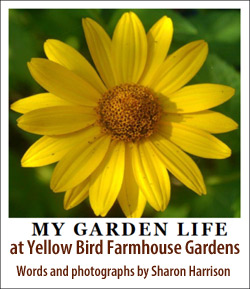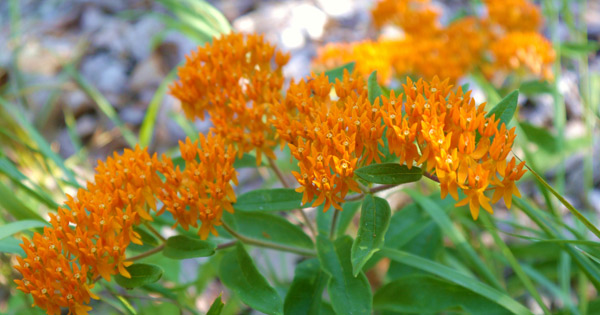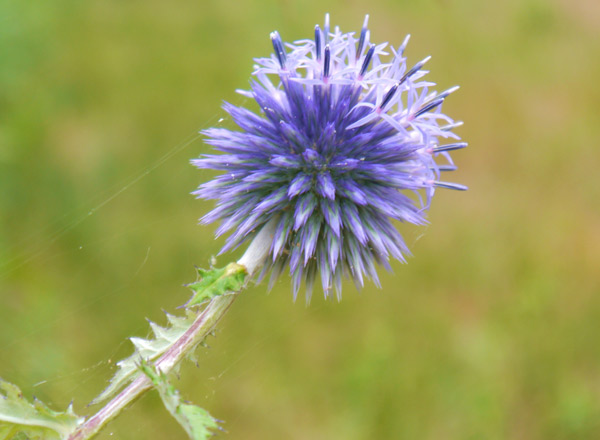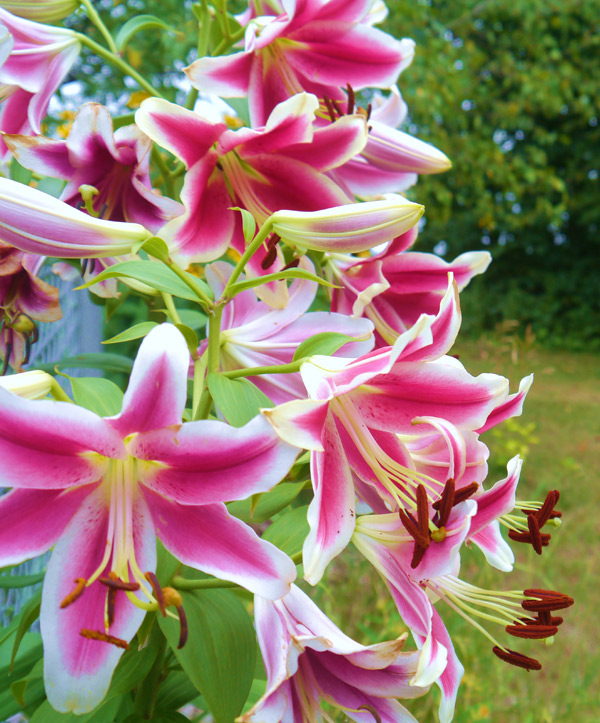Where have all the flowers gone?: Struggles in an arid summer garden
Administrator | Aug 19, 2025 | Comments 0

Rose of Sharon
 While it may well share title – for those old enough to recall the song – it seems an apt question in light of this very challenging growing season: where have all the flowers gone? Many have failed to materialize, others didn’t even set bud (or buds shrivelled), some put every ounce of energy they could muster into producing some flowers, and others have long since given-up. For those that did make it, many perennial and shrub blooms are smaller than usual, fewer in number, and the blooming period for many, noticeably much shorter.
While it may well share title – for those old enough to recall the song – it seems an apt question in light of this very challenging growing season: where have all the flowers gone? Many have failed to materialize, others didn’t even set bud (or buds shrivelled), some put every ounce of energy they could muster into producing some flowers, and others have long since given-up. For those that did make it, many perennial and shrub blooms are smaller than usual, fewer in number, and the blooming period for many, noticeably much shorter.
Even the herb garden, which usually puts on the best show of all with its many Mediterranean heat-adoring perennial and annual herbs has produced the poorest looking herb garden I may have ever seen. Naturally, water would help. Most of the garden cannot be manually watered, it’s simply too big, there is too much of it, and it’s just not practical, and that’s assuming water continues to come out of the ground (as this gardener crosses her fingers and toes).

Perennial sunflower helianthus
Special plants, newly-planted plants, important plants get meticulously hand-watered, a physically hard chore, especially day-in and day-out, for weeks on end. The rest, I am sad to say, are left to their own devices, without water, expected somehow to survive without intervention. It seems a cruel fate, but what is a gardener to do when served up such atrociously difficult and prolonged conditions? Many of the established perennials and smaller shrubs are showing the worst signs of decline due to the lack of moisture in this relentlessly hot summer, and that is worrying because while they will likely pull through, some may not.

Crown of thorns
Even the meadow of wildflowers, which put out extensive growth in the spring, is either not flowering, or as with perennials in the flower borders, blooms are in short supply and often short-lived. Mostly, everything is limp and droopy and looking very sad. And all this begs the question: what happens to the pollinators in a very hot and very dry summer because the wildflowers and weeds are usually brimming with insect activity at this time of the year, and that has not happened much these past weeks. There are some insects, a few butterflies, the usual assortment of things with wings, and crawly things, but nowhere near as many as there usually are, or should be, so have they gone into hiding too to wait out the unsavory conditions.

Butterfly weed
While everything is struggling to some degree or other, perennials are having a hard time, some more so than others, appearing droopy and blooms are less abundant and far smaller where heat (which perennials generally appreciate), often comes with equal parts rain, but not so this year. And so blooms are few and far between, and when there are blooms, they are small and often don’t last like they usually would. All in all, the garden is struggling: it’s lacking vigour, its parched, and looking tired and bedraggled, and largely now in a forced dormancy as the vegetation does everything possible to save its energy by shutting down, now in survival mode.

Globe thistle
And there are the weeds, the unwanted vegetation that pops-up in the most unwanted places, which have run riot this summer, especially with the lawnmower also in summer dormancy. What were lovely green lawns have become dry, crispy brown or yellowed groundcover, crunchy underfoot in ways decidedly not pretty, nor comfortable for feet. And yet it is among the dead lawn that weeds of all sorts have appeared, tufts of odd-looking growth, some several feet tall, their roots likely deep (certainly far deeper than any grass) so they sustain drought more easily. After many weeks of dry conditions, even some of the weeds have died, especially the smaller ones, others look limp, and it’s a sorry sight when you start to feel sorry for the weeds. And when you see weeds struggling, you know things must be quite serious because when do weeds ever struggle to survive?

milkweed seed pods
The generous supply of hardy milkweed in the meadow is also struggling, starved of moisture: struggling to bloom, the flower buds dying off prematurely where blooms were either non-existent or small in size and short-lived. It’s a familiar story. A few have at least produced seed pods, having decided to put their energy in that task, which is a good thing. There are successes this summer, albeit short-lived and in short supply, and not looking at vibrant as we may like, whether its butterfly weed, globe thistle, perennial sunflowers (helianthus), or the many indoor houseplants which have filled the flowering gap; regularly-watered tropicals thriving in the summer heat as they summer outdoors.
I am not sure if it is some kind of record, but it is almost nine long weeks and counting (although it seems far longer) since I have used my lawnmower to cut the grass where it was about the third week of June when I last got out my trusty mower. Realizing it was not used at all through July, or August (so far), I wonder what the coming weeks will bring, or if I will get to use it ever again. While this may seem a good thing on the surface, I have decided, it is far from good.
While the grass could do with a trim, if for nothing else but to remove the tall wispy weeds that dot the lawn, I am reluctant because the grass is essentially near dead and I don’t need to contribute to its demise just to satisfy my annoyance of weeds, which I am actually beginning to enjoy. Brown, or a version of dull yellow, the crispy grass is no longer grass, and tall wispy weeds get to stay, for now, except for the occasional lack-lustre hand-pulling effort, but mostly the colourful chicory and its companions, remain.
As I often lament the chore of grass cutting when it comes every three days or every week which can soon become an unpleasant task when it refuses to stop growing in the spring, where as soon as the mowing is finished, it’s time to start mowing again, I miss mowing. I miss the activity, I miss the physical exercise, I miss the inspiration, the movement and rhythm, and just the activity itself. And I miss my lawnmower. While the lawn’s growth often slows in the height of summer, it surely rains and grows again, but not in this hideously hot and arid summer, as no mow July turns into no mow August.
Click here for more gardening columns by Sharon Harrison

-A gardener all her adult life, and much of her childhood, Sharon Harrison blames her parents for this predicament, both of whom are life-long gardeners and growers of good things, nonetheless grateful for the gardening genes, and the growing passion.
While she has written on countless topics over many years for numerous publications and media, her heart remains rooted in her Prince Edward County garden as a grower of beautiful, strange and sometimes ordinary things, inspired and influenced by nature, wildlife and the fragility of environment.
Filed Under: News from Everywhere Else • Sharon Harrison
About the Author:































